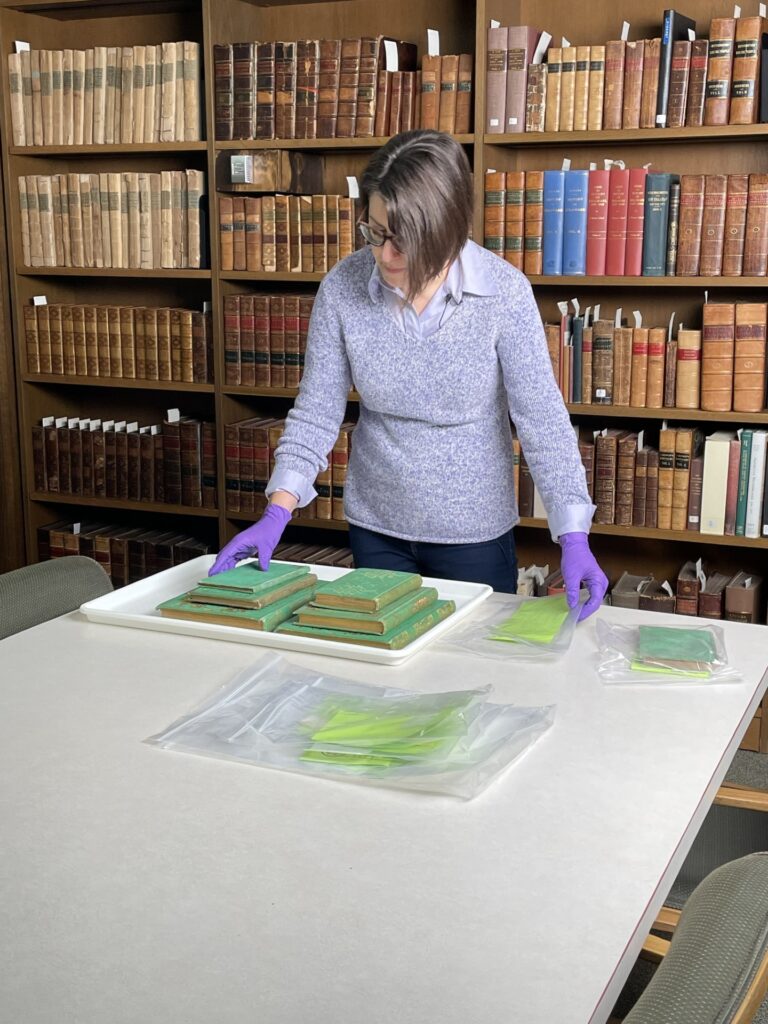A recent feature by The Washington Post on the Poison Book Project has been picked up by news outlets around the world. The Poison Book Project is an interdisciplinary research initiative at Winterthur Museum, Garden & Library and the University of Delaware.
This ongoing investigation explores the materiality of Victorian-era publishers’ bindings. Research focuses on identifying potentially toxic pigments used in bookbinding components and how to handle and store potentially toxic collections more safely.
The Post article is behind a paywall, but you can read the full article in The Seattle Times, The San Diego Union-Tribune, The Spokesman-Review, and elsewhere.

An excerpt from the article:
The Poison Book Project began after Melissa Tedone’s own chance encounter with a curious emerald tome.
At the time, Tedone was the head of the library conservation lab at Winterthur, a historical estate and museum affiliated with the University of Delaware, where she assessed and restored objects in the institution’s collection. In 2019, for an exhibition on Victorian aquariums, she was tasked with repairing a book called “Rustic Adornments for Homes of Taste.” “It was a bright green book, and the covers had fallen off,” Tedone said. It was her job to put them back on, but she noticed something strange while working.
“There was something about the way the pigment was behaving. I could see it flaking off under the microscope,” she said. At the time, she was reading a book about arsenical wallpaper common in the 19th century. “It was a serendipity moment. I thought that maybe we should test this pigment and make sure it’s not full of arsenic.”
It turned out the book was full of arsenic. “Really quite a lot of arsenic,” she said…
About 50% of the books that have been analyzed have tested positive for lead, which is present in multiple pigments as well as pigment enhancers. Chromium has shown up in Victorian yellows, and mercury in the era’s intense reds. Arsenic, the most toxic of these chemicals, has been found in 300 books, including those with benign titles such as The Grammar School Boys and Friendship’s Golden Altar.
“Arsenic is in its own category,” Tedone said. “Not only is it more toxic than the other heavy metal pigments, but we are finding that measurable levels of arsenic are coming off on your hands.”
The findings have led large institutions, including the National Library of France and the University of Southern Denmark, to remove books from circulation and place them in quarantine.